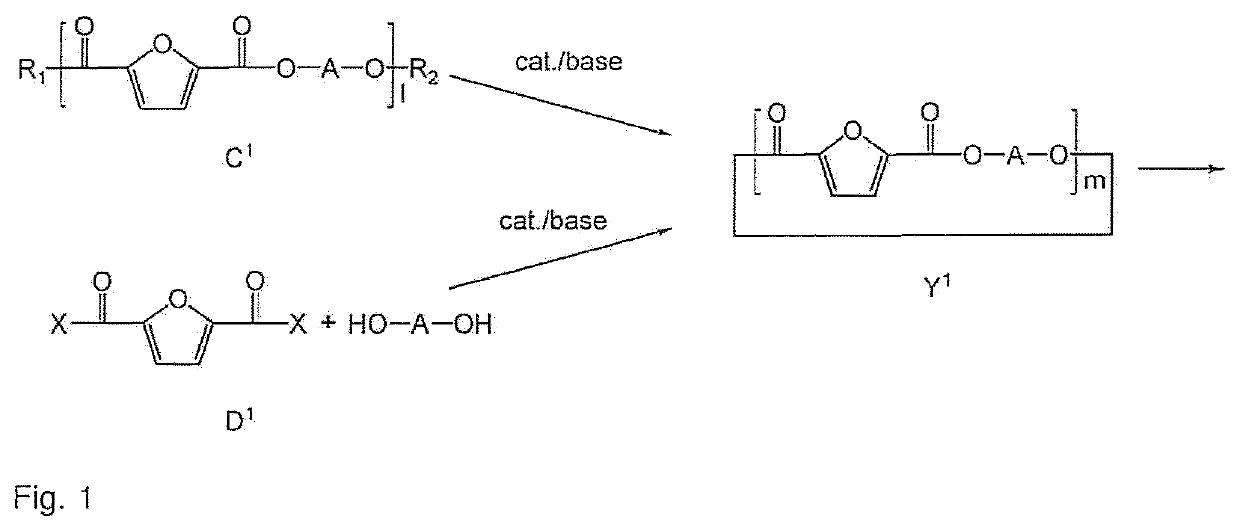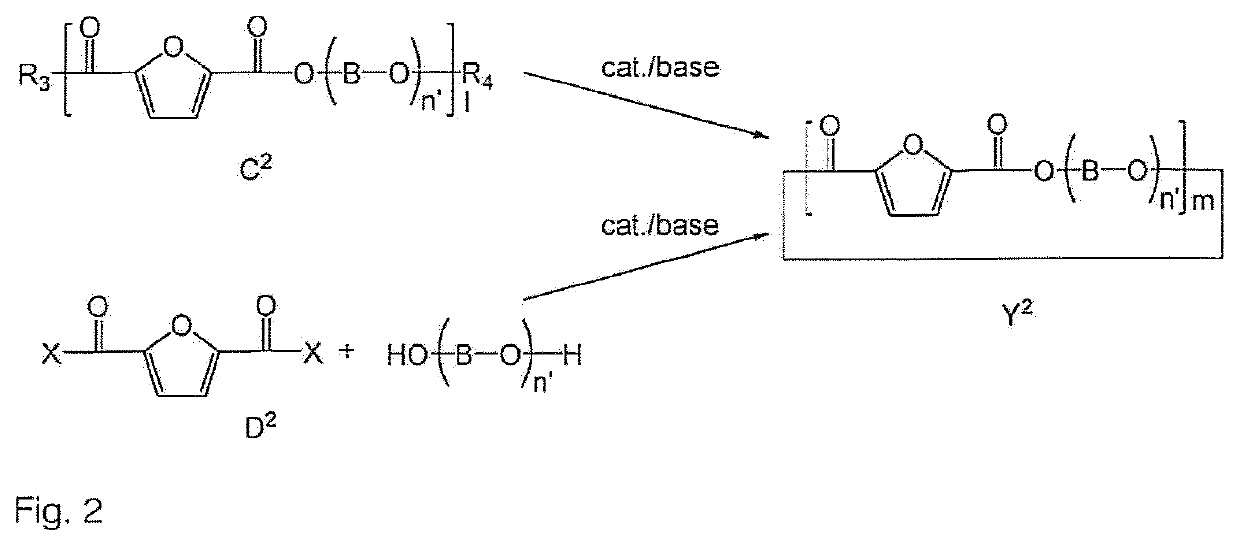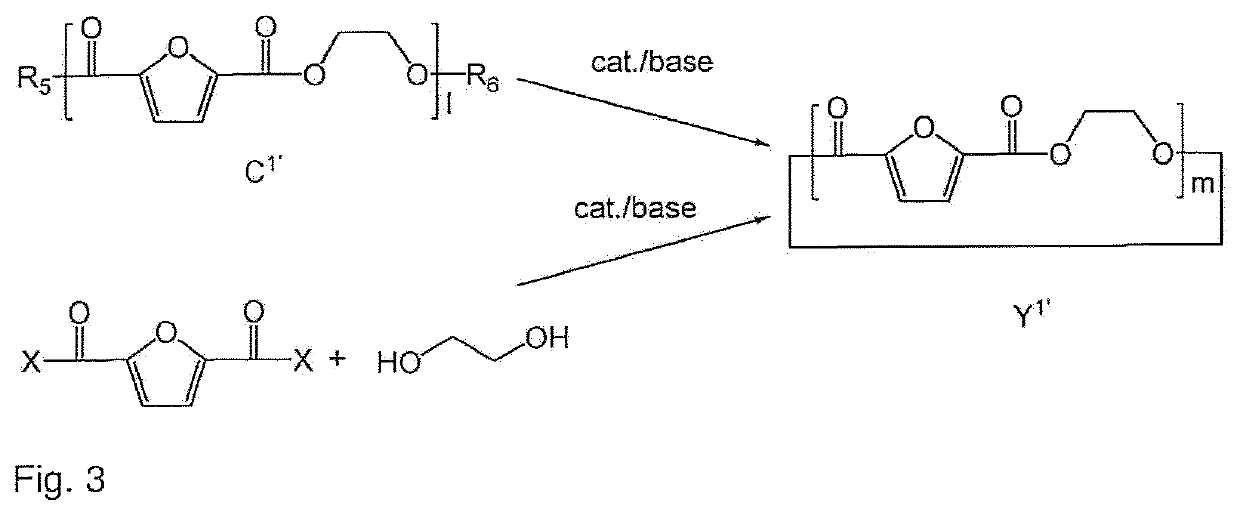Process to prepare a cyclic oligomer and a cyclic oligomer obtainable thereby and a process to polymerize it
a technology of cyclic oligomers and polymerization processes, which is applied in the field of process to prepare cyclic oligomers and cyclic oligomers thereby and a process to polymerize them, can solve the problems of thermally sensitive partially aliphatic oligomers, degradation and discoloration, and the purity of the reaction product (iv. cyclic polyester oligomer composition) in cdp is limited, and achieves
- Summary
- Abstract
- Description
- Claims
- Application Information
AI Technical Summary
Benefits of technology
Problems solved by technology
Method used
Image
Examples
example 4
n of PEF from Cyclic Polyester Oligomer Composition: In the Presence of Catalyst
[0152]In this example, the cyclic oligomer was prepared by reactive distillation of this species:
[0153]
in dichlorobenzene (DCB) with a purity of about 95% as determined by HPLC. It was then purified over silica gel using DCB to greater than 99% purity as determined by HPLC. Ring-opening polymerization was then conducted using 0.1% cySTOX as catalyst to yield a bottle-grade PEF polymer having a molecular weight of 60,000 Dalton as determined by SEC analysis.
example 5
n of PEF from Cyclic Polyester Oligomer Composition
[0154]In this example, the cyclic oligomer was prepared by prepolymerization of dimethyl FDCA and ethylene glycol (EG) over two hours to yield EG-FDCA-EG with an Mn of less than 1,000 Dalton. Subsequent reactive distillation over 2 hours in dichlorobenzene (DCB) yielded the cyclic oligomer with a purity of about 95% as determined by HPLC. It was then purified over silica gel using DCB to greater than 99% purity as determined by HPLC. Ring-opening polymerization was then conducted to yield a bottle-grade PEF polymer having a molecular weight of 60,000 Dalton as determined by SEC analysis.
example 6
n of PEF from Cyclic Polyester Oligomer Composition
[0155]In this example, the cyclic oligomer was prepared by reactive distillation of this species:
[0156]
in dichlorobenzene (DCB), which yielded the cyclic oligomer with a purity of about 95% as determined by HPLC. It was then directly polymerized by ring-opening polymerization to yield a fiber-grade PEF polymer having a molecular weight of 35,000 Dalton as determined by SEC analysis.
PUM
| Property | Measurement | Unit |
|---|---|---|
| Pressure | aaaaa | aaaaa |
| Mass | aaaaa | aaaaa |
| Viscosity | aaaaa | aaaaa |
Abstract
Description
Claims
Application Information
 Login to View More
Login to View More - R&D
- Intellectual Property
- Life Sciences
- Materials
- Tech Scout
- Unparalleled Data Quality
- Higher Quality Content
- 60% Fewer Hallucinations
Browse by: Latest US Patents, China's latest patents, Technical Efficacy Thesaurus, Application Domain, Technology Topic, Popular Technical Reports.
© 2025 PatSnap. All rights reserved.Legal|Privacy policy|Modern Slavery Act Transparency Statement|Sitemap|About US| Contact US: help@patsnap.com



